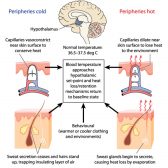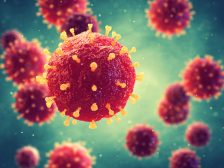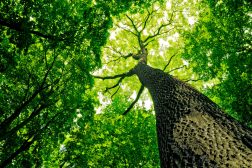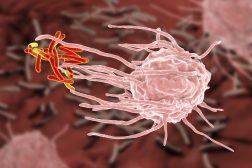The Gene Pool and Population Genetics

Natural selection will favor genes that are more suited to the environment.
Table of Contents
Reviewed by: Mary Anne Clark, Ph.D.
The previous tutorial is about adaptive radiation. Adaptive radiation is the slow change of genotype and phenotype of a species from its common ancestor, meaning that species with a common ancestor become more diversified over time.
Charles Darwin’s The Origin of Species went into great depth in providing substance into the theory of evolution. The key thing to remember about evolution is that it favors more preferable genes in the gene pool, and over time, these preferable characteristics become more exclusive in the gene pool.
This next section rounds up all the factors that can alter the makeup of a gene pool
Natural Selection
Natural selection will favor genes that are more suited to their environment and become more exclusive in the gene pool over time in such an environment. Different genes will become more exclusive when the environment changes, or the species migrate.
Mutation
Mutations are random occurrences that change the genome of an organism. They greatly increase genetic diversity, where advantageous mutations are favored by natural selection and disadvantageous ones are phased out.
Gene Migration and Reproductive Isolation
Gene Migration occurs after genetic drift. Reproductive isolation, in turn, occurs when two groups of a species become separated and therefore cannot reproduce. The gene pool of these groups differs over time. If these two groups can once again meet up and reproduce, their genetic differences can be merged within the single group and increase genetic diversity.
Non-Random Mating
Can cause inbreeding depression by continuous inbreeding, non-random mating is also known as selective breeding, where the breakthroughs of Mendelian genetics have allowed us to predetermine what genes are present in offspring. As advantageous genes are desired by the breeder, some of the less ‘popular’ genes are lost due to this random mating, therefore decreasing genetic diversity.
It is important for a species to have a large gene pool, because in the event of danger, some alleles will allow the species to survive and reproduce to produce a larger and more variant gene pool. For example, an extremely contagious disease may threaten 99% of a species, though the remaining 1% may possess an allele that provides them with resistance to the disease. If this allele was not present in the population, then chances are the entire population would be wiped out
Genetic Drift
Sometimes, species can be split into groups, usually as a result of a geographical factor preventing the two groups from contacting one another. This means that the two groups are unable to reproduce with one another.
As the two groups now live in different environments, natural selection will favor slightly different genes in each of the groups that will favor them in their particular environment. Over time, the difference in gene pool between the two groups can be quite dramatic.
If these two groups once again become re-united, gene migration occurs (see above). If they remain separated, their genetic differences become greater which can result in the formation of a new species.
Speciation
When the genetic differences become so great, it can come to the stage where the two groups can no longer reproduce with one another. This results in the formation of a new species (because organisms who are capable of reproducing but can’t reproduce with a member of the same species are deemed another species).
Long ago, the land of Earth was all on one continent. Over time these continents separated, with members of the same species drifting away on each continent. Over time, speciation has occurred. This is evident by looking at the marsupials of Australia, who have been isolated from other mammals in their ancestral line, and therefore have many differences to that of mammals on other continents.
 POPULATION GENETICS – MATCH-UP (pdf) POPULATION GENETICS – MATCH-UP (pdf) | POPULATION GENETICS – MATCH-UP ACTIVITY A practice worksheet to help students become familiar with the different terms and concepts in population genetics. One approach is to answer this worksheet during an advance reading or while doing vocabulary research. Subjects: Genetics & Evolution |
You will also like...

Pollution in Freshwater Ecosystems
There are many environmental factors that arise due to the usage of water in one way or another and for every action tha..

Temperature Regulation in Animals
This tutorial elucidates body temperature regulation. Know the details here to learn how the body sets the body temperat..

Biological Viruses
Viruses possess both living and non-living characteristics. This unique feature distinguishes them from other organisms...

Stems
Stems primarily provide plants structural support. This tutorial includes lectures on the external form of a woody twig ..

Still Water Community Plants
This tutorial looks at the adaptations of freshwater plants for them to thrive in still water habitats. Familiarize your..

Biological Cell Defense
Organisms employ different strategies to boost its defenses against antigens. Humans have an immune system to combat pat..
